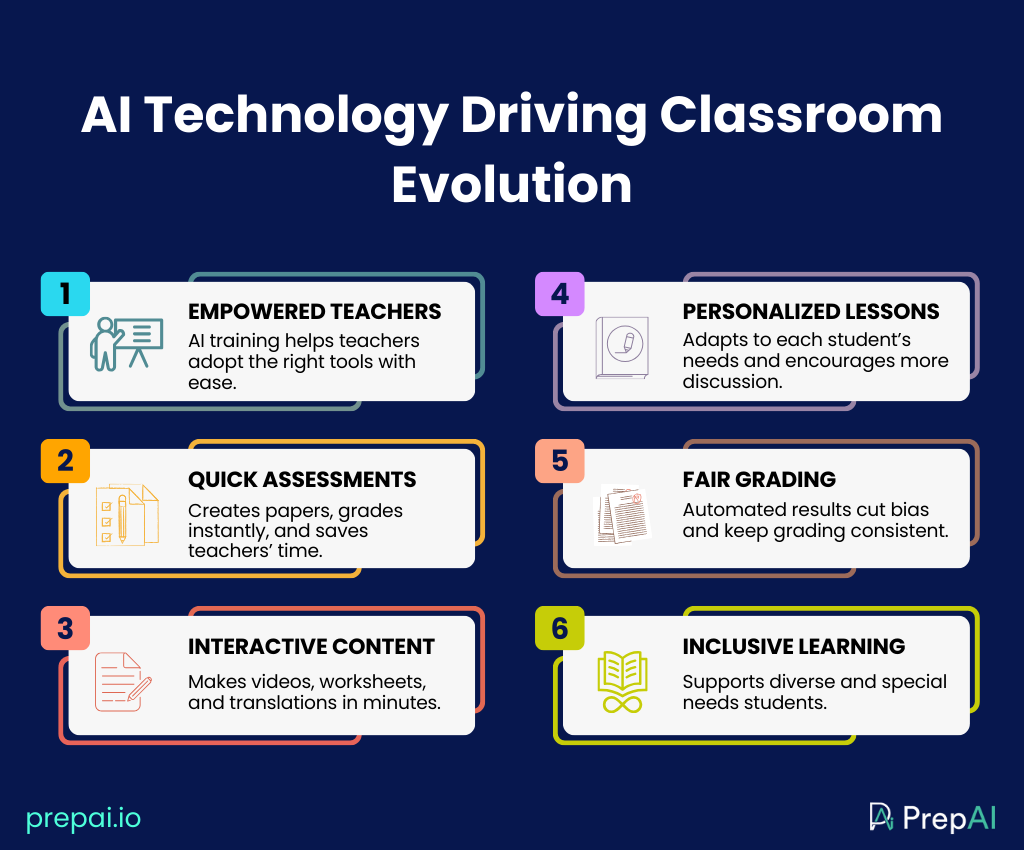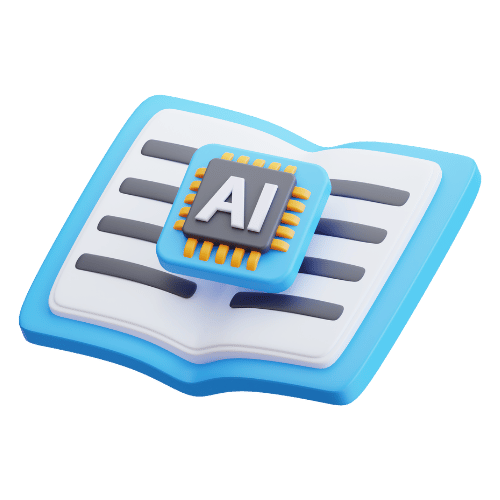Empowering teachers to use AI is the best way to transform the education industry. Here, we’ll discuss how the AI literacy training for teachers’ initiative by the National Academy for AI Instruction can foster classroom evolution.
Artificial intelligence is making rapid strides in the education industry. Statistics show that the global AI in education market size is expected to grow at a CAGR (compound annual growth rate) of 37.2% between 2024 and 2032 to reach $17.28 billion. Educational institutions from around the world have been investing in AI in some form to embrace the new technology and the changes it introduces into their processes.
Schools in Kenya, Nigeria, South Africa, etc., from the African continent have also been adopting AI in the form of AI tutors, mobile-based reading level assessing platforms, apps to foster critical thinking in students, etc. These developments are being fuelled by public and private partnerships. Schools are working with private EdTech service providers, while governments are partnering with tech giants to introduce AI in classroom instruction and make it integral to the education industry.
For example, since 2023, $50 million has been invested in training African educators in AI literacy by Google’s Digital Sprinters Program. This initiative has reached 100,000 teachers across ten African countries.
Similar large-scale initiatives are happening in the US, with Microsoft, Anthropic, and OpenAI backing the project by the National Academy of AI Instruction to develop an AI training curriculum for K-12 educators. The project will first focus on schools in New York City to promote classroom evolution with AI.
Let’s read more about the initiative and how AI literacy training for teachers can lead to classroom evolution.
National Academy of AI Instruction for AI Literacy Training
The American Federation of Teachers (AFT) partnered with the United Federation of Teachers, as well as tech firms like Microsoft, OpenAI, and Anthropic, to launch the National Academy of AI Instruction. It is a $23 million initiative to provide free AI training and curriculum to all members of the AFT. K-12 educators are the first batch to receive this training.
The intention behind starting the academy is to empower teachers to understand and use AI effectively, to help them set guidelines for using AI in classrooms, to create awareness in students about the ethical use of AI, understand how AI can reduce their workload, etc. Furthermore, educational transformation with AI becomes less challenging when teachers don’t resist new developments due to fears or concerns. The AI literacy training program aims to bridge the gap between teachers and AI, thus creating a responsible framework for using it in classrooms. Additionally, educators can provide feedback and ideas to EdTech companies to create better and more aligned AI tools to serve the purpose of learning and development. For example, teachers can use existing exam generator tools and provide suggestions on how to improve the features for a greater experience.

The initiative will be scaled nationally in the next five years and will include online courses, workshops, hands-on training, access to resources, and ongoing support. This is to ensure teachers stay updated about the latest developments in AI and how to navigate the changes.
AI Technology in Classroom Evolution
When teachers are trained to use AI tools responsibly and effectively, they will not oppose the adoption of new technologies. Instead, they will actively help identify the right tools and technologies useful for fostering better learning experiences. After all, students are already using AI extensively. Banning it can be counterproductive. However, creating awareness and educating students to use AI ethically will be more effective in the long run.
AI in Classroom Instruction
Every student is different and has to be treated as an individual. Conventional methodologies of providing the same instruction to every student are being replaced by personalized learning. However, without proper support systems, teachers can be overwhelmed by the amount of work required to achieve this. That’s where AI is helpful and necessary. Multimedia can become a part of online and offline classrooms. Complex lessons can be simplified into smaller topics to create space for discussion between students, which enables them to learn more, as well as develop their soft skills and personality traits.
AI for Assessment and Testing
AI assessment tools have taken the education sector by storm. These tools made it easy to conduct online exams whenever and however necessary. From automatically generating the question papers to grading the submissions and sharing instant results with students, tools like PrepAI are powerful assistants for teachers. Using AI for assessment and testing reduces workload and saves several hours, thus allowing teachers to focus on core teaching activities or discussing the feedback with students. Moreover, they increase and establish test integrity by reducing personal bias and minimizing the risk of human error. With automated grading, schools can standardize benchmarks for awarding grades and ranks to students without letting bias and prejudice affect the process.
AI for Smart Content Development
Apart from AI instruction in classrooms, it can also be used to develop personalized and diverse content for students. Generative AI has made it easy to create new study material, images, videos, multimedia content, etc., in a quick time. Customized worksheets, graphical presentations, translating lessons from one language to another, and converting notes to videos and vice versa are easy with AI. Teachers can keep students engaged in the classroom with such interactive and personalized content. Additionally, it helps in building inclusive classrooms where students from diverse backgrounds and students with disabilities can participate easily alongside others.
Integrating PrepAI into Classrooms
Integrating a talent assessment tool like PrepAI into classrooms creates a seamless assessment process while ensuring teachers retain control over it. PrepAI is an NLP-powered (natural language processing) question generator that converts input content into different question types. The tool accepts input in various formats like Word, PDF, audio, video, and URL. It also has a built-in search. This input content is converted into MCQs (multiple choice), true/ false, fill-in-the-blanks, matching, descriptive questions, and crosswords, based on the user’s selection. Once the question paper is ready, the tests can be conducted online by sharing the link to students in bulk (via email). The submissions are automatically graded as well.
Moreover, PrepAI is supported by Bloom’s Taxonomy framework, which allows teachers to create questions that test higher-order thinking skills (HOTS). Teachers can not only conduct regular class tests, surprise quizzes, summative and formative exams, but also conduct leadership assessments, cognitive-based assessments, etc., to understand the strengths and weaknesses of each student to guide them accordingly.

Final Words
The future of AI in education is already here, with schools investing in LMS (learning management systems), ITS (intelligent tutoring systems), chatbots, assessment tools, AR/ VR (augmented reality/ virtual reality) devices, and other AI solutions to redefine the classroom learning experience.
Training educators through AI literacy programs paves the way for more such changes in the industry, with less resistance and greater adaptability. When teachers know how to use AI, they retain control and remain strategic decision makers. This ensures that technology is actively used without letting technology take over the process.
Know educators who would benefit from embracing smart assessments? Partner with us to take AI assessments to more classrooms!



